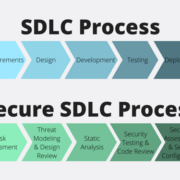Understanding ISO 27001:2022 Annex A.9 – Access Control
We started the ISO 27001:2022 series with the promise of explaining how the 14 categories of controls can be implemented.
Today we address ISO 27001:2022 Annex A.9, “Access Control”.
Access control is a fundamental component of information security management systems (ISMS).
It provides guidelines for implementing controls to ensure that only authorized individuals have access to information assets and resources.
Importance of Access Control
Access control is crucial for protecting sensitive information, preventing unauthorized access, and maintaining the confidentiality, integrity, and availability of organizational assets. Annex A.9 underscores this importance by:
- Protecting Information Assets: Implementing access controls helps safeguard sensitive data, intellectual property, and critical systems from unauthorized disclosure, modification, or destruction.
- Enforcing Least Privilege: Access control mechanisms ensure that individuals have access only to the resources and information necessary to perform their job responsibilities, minimizing the risk of misuse or abuse.
- Mitigating Insider Threats: Controls such as user authentication, authorization, and auditing help detect and deter insider threats, including malicious activities by employees, contractors, or third-party users.
Implementing Annex A.9 in Practice
To effectively implement Annex A.9, organizations can follow these practical steps:
- Access Control Policy: Develop an access control policy that defines the principles, rules, and procedures governing access to information assets and resources. The policy should outline requirements for user authentication, authorization, access provisioning, and access revocation.Example: Define a password policy specifying requirements for password complexity, expiration, and reuse to strengthen authentication controls.
- User Authentication: Implement robust authentication mechanisms to verify the identity of users accessing organizational systems and resources. This may include passwords, biometric authentication, multi-factor authentication (MFA), or single sign-on (SSO) solutions.Example: Deploy MFA solutions requiring users to authenticate using a combination of passwords and one-time passcodes sent to their mobile devices for accessing sensitive systems.
- Authorization Controls: Define access control lists (ACLs), roles, and permissions to determine the level of access granted to users based on their roles, responsibilities, and organizational hierarchy.Example: Assign roles such as “administrator,” “manager,” and “user” with corresponding access rights and permissions to resources based on job responsibilities.
- Access Provisioning and Revocation: Establish procedures for provisioning access to new users and revoking access for departing employees, contractors, or third-party users in a timely manner.Example: Develop an access request and approval process where users submit access requests, which are reviewed and approved by authorized personnel before access is provisioned.
- Monitoring and Auditing: Implement logging and auditing mechanisms to track user activities, monitor access attempts, and detect unauthorized access or suspicious behavior.Example: Configure audit logs to record user login attempts, access permissions changes, and unauthorized access attempts for review and analysis.
Audit of Compliance with Annex A.9
Auditing compliance with Annex A.9 is essential for evaluating an organization’s adherence to access control requirements. Here’s how the audit process typically unfolds:
- Audit Preparation: Gather documentation related to access control policies, procedures, and controls. Appoint an audit team to facilitate the audit process.
- Audit Planning: Define the audit scope, objectives, and criteria. Develop an audit plan outlining activities, timelines, and responsibilities of auditors and auditees.
- On-site Audit: Conduct on-site visits to assess implementation of access control controls. Review documentation, interview personnel, and observe access control practices. Use checklists or assessment tools to evaluate compliance.
- Audit Findings: Analyze findings and identify areas of non-compliance or improvement opportunities. Document observations, including strengths and weaknesses in access control implementation.
- Reporting: Prepare an audit report summarizing findings, conclusions, and recommendations for corrective actions. Share with senior management and stakeholders for review and action.
- Follow-up: Address audit findings by implementing corrective actions and improvements as recommended. Conduct follow-up audits to verify effectiveness of corrective measures and ensure ongoing compliance.
Conclusions
ISO 27001:2022 Annex A.9 emphasizes the importance of access control in protecting information assets and mitigating security risks. By implementing robust access control mechanisms, organizations can prevent unauthorized access, enforce least privilege, and safeguard sensitive information. Regular audits help assess compliance with Annex A.9 requirements and drive continuous improvement in access control practices. Prioritizing access control is essential for organizations seeking to maintain the confidentiality, integrity, and availability of their information assets in an increasingly interconnected and digital world.
The post Understanding ISO 27001:2022 Annex A.9 – Access Control first appeared on Sorin Mustaca on Cybersecurity.





